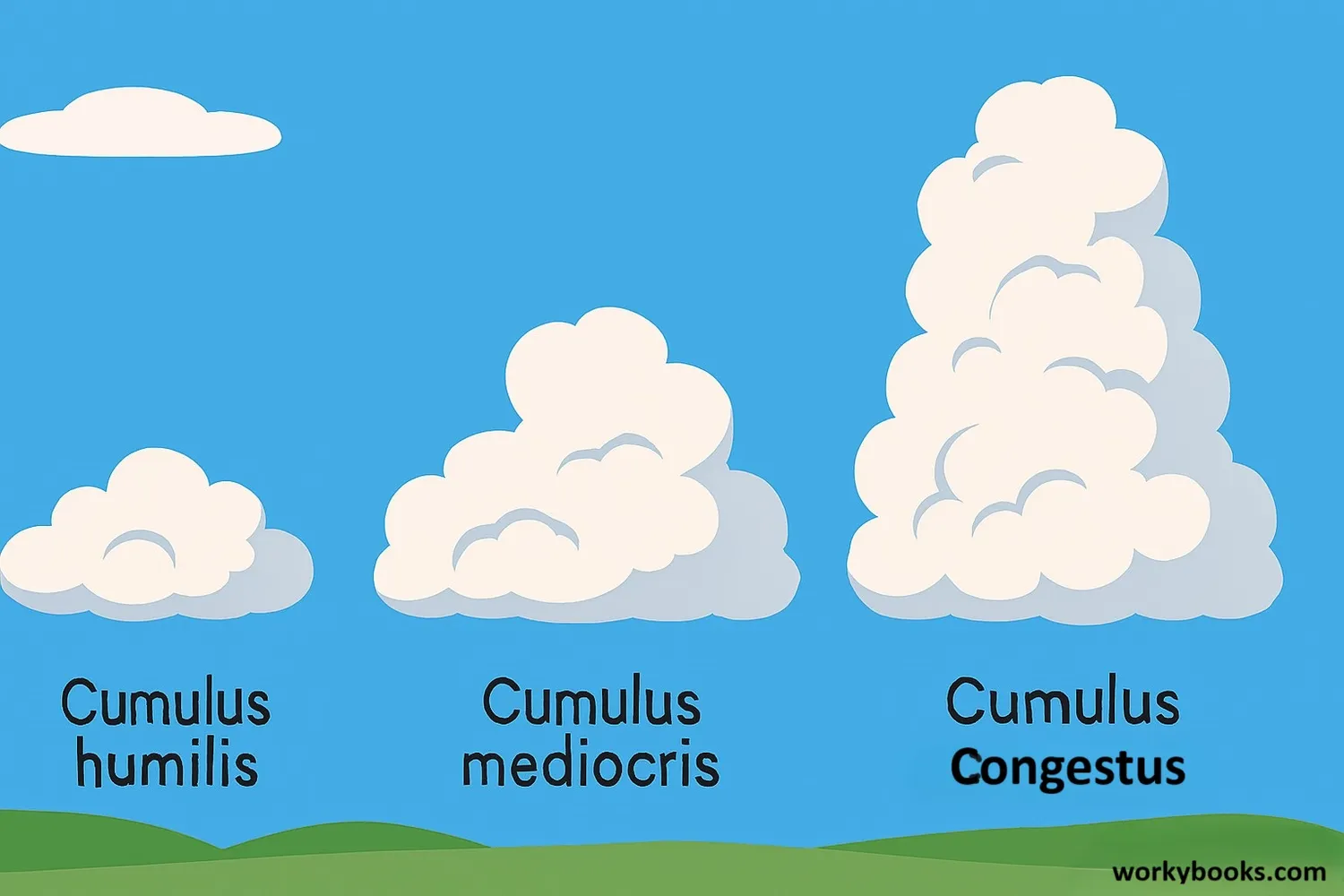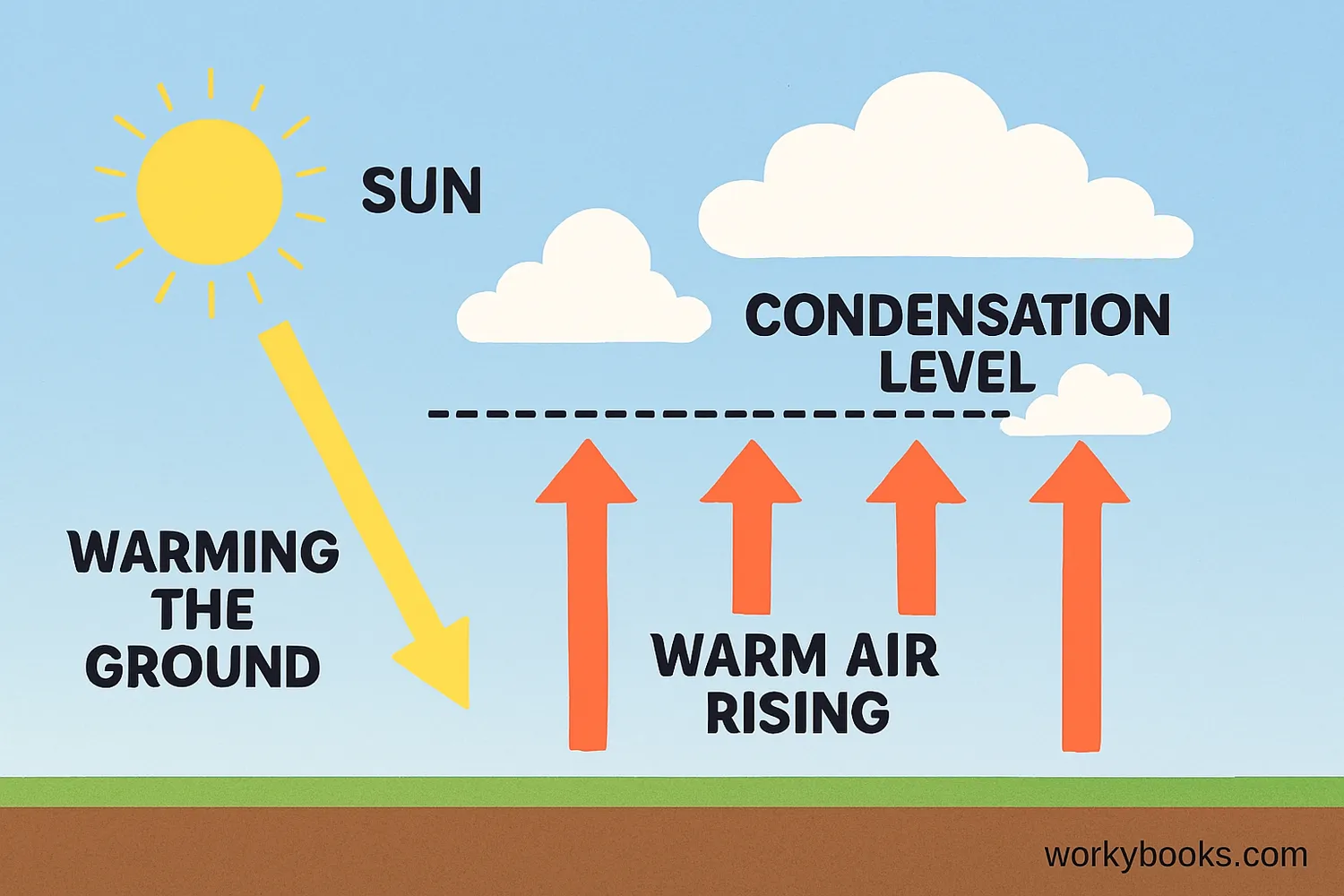Cumulus Clouds - Definition, Examples, Quiz, FAQ, Trivia
Discover the fluffy clouds that bring fair weather
What are Cumulus Clouds?

Cumulus clouds are the fluffy, puffy clouds that look like cotton balls floating in the sky. They are often called "fair-weather clouds" because they usually appear on sunny days. The word "cumulus" comes from Latin and means "heap" or "pile," which perfectly describes how these clouds look!
These clouds form when warm air rises from the Earth's surface. As the warm air cools, water vapor condenses into tiny water droplets that create the cloud. Cumulus clouds usually have flat bases and rounded, puffy tops.
Cloud Fact!
Cumulus clouds are the most common type of cloud we see on sunny days. They usually appear in the morning and grow throughout the day.
Types of Cumulus Clouds

Not all cumulus clouds look the same! Meteorologists classify them based on their size and shape:
Cumulus Humilis
Small, flat cumulus clouds that look like cotton balls. These are fair-weather clouds and don't produce rain.
Cumulus Mediocris
Medium-sized cumulus clouds that are taller than they are wide. They might grow into rain clouds later in the day.
Cumulus Congestus
Towering cumulus clouds that look like cauliflower. These can develop into storm clouds (cumulonimbus).
By observing the different types of cumulus clouds, meteorologists can predict how the weather might change throughout the day. Small cumulus humilis clouds usually mean good weather will continue, while taller cumulus congestus clouds might mean thunderstorms are coming!
How Cumulus Clouds Form

Cumulus clouds form through a process called convection. Here's how it works:
Sun Warms the Ground
The sun heats the Earth's surface, especially dark areas like forests and pavement
Warm Air Rises
The warm ground heats the air above it, causing that air to rise in columns called thermals
Air Cools
As the warm air rises higher in the atmosphere, it cools down
Condensation
Water vapor in the cooling air condenses into tiny water droplets
Cloud Forms
Millions of water droplets gather together to form a cumulus cloud
This process usually happens on sunny days when the ground heats up quickly. That's why you often see cumulus clouds developing in the late morning and growing bigger throughout the afternoon. By evening, as the sun sets and the ground cools, the clouds often disappear.
Cloud Fact!
The flat base of cumulus clouds forms at the altitude where rising air cools enough for water vapor to condense. This is called the condensation level.
Cumulus Clouds Quiz
Test your cloud knowledge with this fun quiz! Answer all 5 questions to see how much you've learned.
Frequently Asked Questions
Here are answers to some common questions about cumulus clouds:
Fun Cloud Trivia
Discover some amazing facts about clouds and weather!
Heavy Clouds
A medium-sized cumulus cloud weighs about as much as 80 elephants! That's around 1.1 million pounds of water droplets floating in the air.
Cloud Color Science
Cumulus clouds appear white because their water droplets scatter all colors of sunlight equally. When clouds become thick enough to block sunlight, they appear gray.
Cloud Classification
The modern cloud classification system was created in 1802 by Luke Howard, an English chemist. He gave cumulus clouds their name and classification that we still use today!
Cloud Forests
In mountainous tropical regions, cumulus clouds often form "cloud forests" - ecosystems where clouds cover the forest canopy for much of the day, providing moisture for unique plants and animals.


